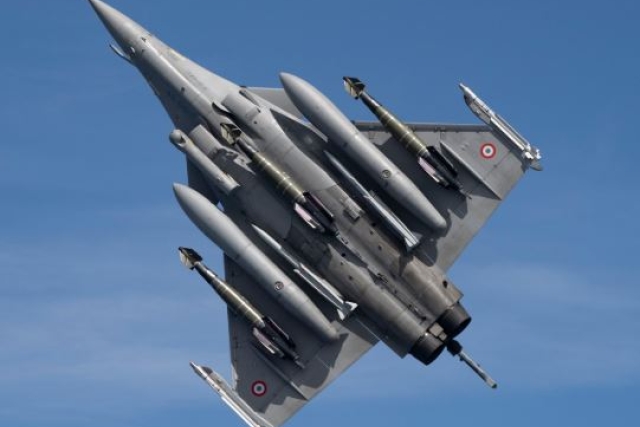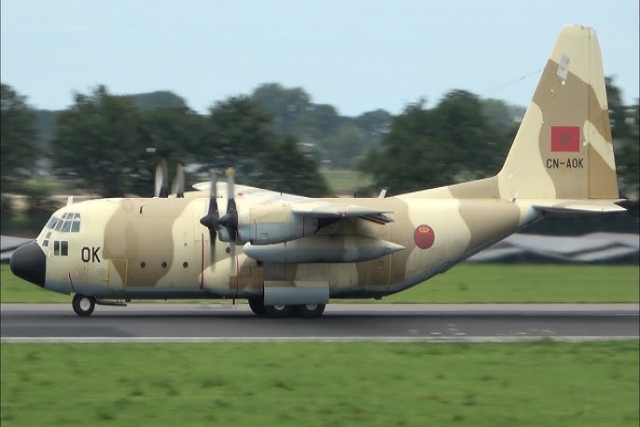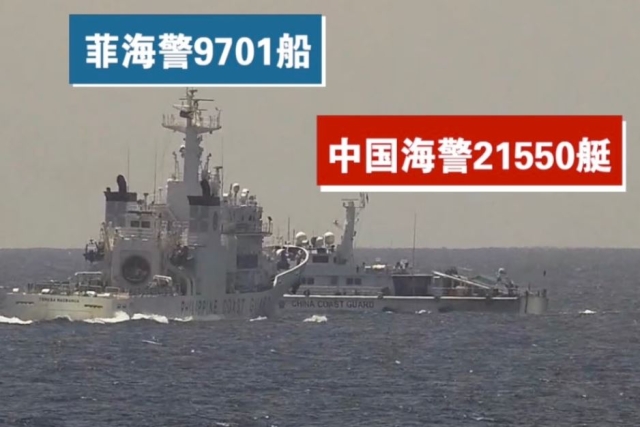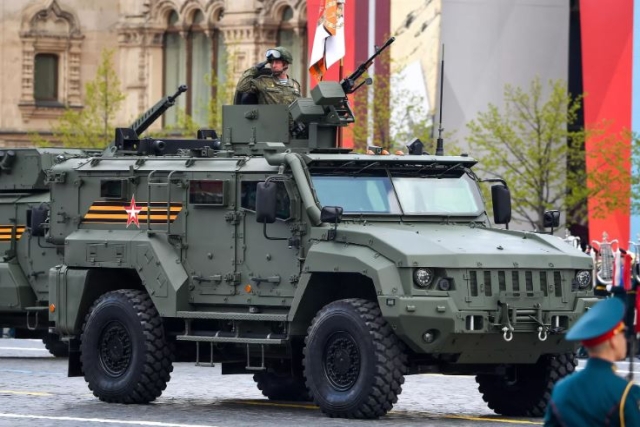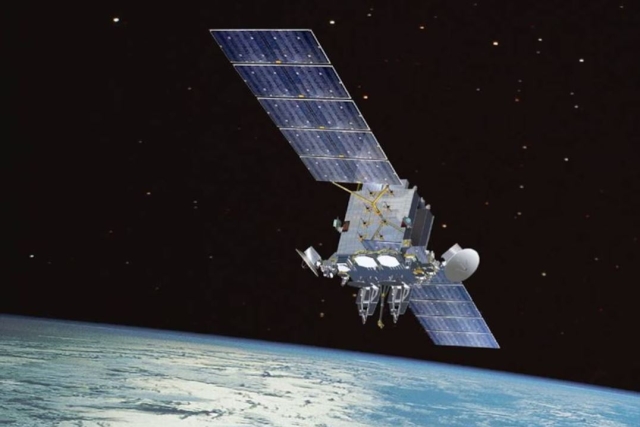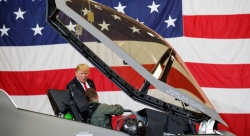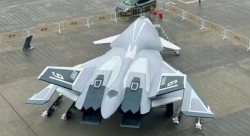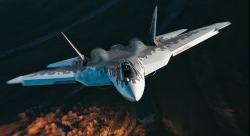China's Mass-produced J-35A Aircraft Set to Disrupt Global Stealth Fighter Market
J-35A expected to enter PLA Air Force service by 2026–27 and take on the American F-35 in the export market; Export to Pakistan is on the cards
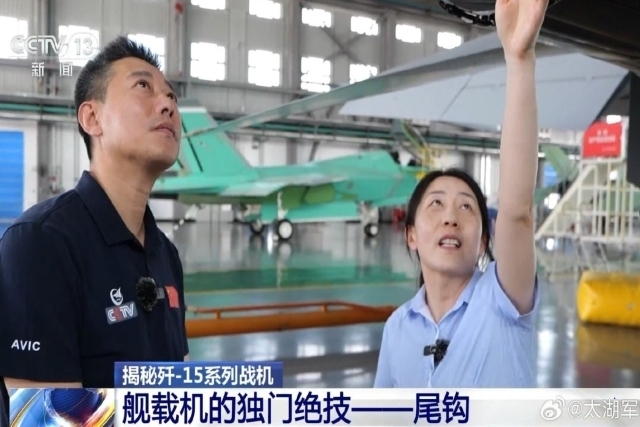
J-35 airframe under production @CCTV via X
China is aiming to disrupt the global stealth fighter market by mass-producing its fifth-generation J-35A at a pace comparable to Cold War-era MiG-21 production.
Unveiled at Airshow China in Zhuhai in late 2024, the J-35A may already have entered serial production. Deliveries to the People’s Liberation Army Air Force (PLA-AF) are expected between 2026 and 2027.
New images from a Chinese production facility, believed to be Shenyang Aircraft Corporation’s, show multiple nearly completed J-35A airframes on an assembly line, suggesting a potential production ramp-up. While Beijing has not confirmed this, analysts point to increased defense-industrial activity and modernization efforts indicating the J-35A is nearing fleet-level integration.
“The J-35A is needed by the (Chinese) Air Force to establish a ‘considerable scale’ fleet of affordable, powerful stealth jets,” said Wang Yongqing, chief researcher at AVIC’s Shenyang Aircraft Design and Research Institute, in an interview with China Daily. He added that the radar-evading aircraft is intended to serve as the backbone of the PLA-AF’s strategy to counter high-level threats, including hostile stealth fighters.
Reports suggest Pakistan may become the first export customer, possibly acquiring around 40 J-35As. Pakistan has long served as a test bed for Chinese weapons, including aircraft, tanks, and radars, many of which were later sold to other countries.
J-10CE in Spotlight after Encounter with Indian Rafales
As China promotes the J-35A, its earlier export-focused jet, the J-10CE, gained unexpected visibility following a reported encounter between Pakistan’s J-10CEs and India’s Rafales in May 2025. Pakistan claims its J-10CEs shot down multiple fighters, including Rafales, with PL-15 missiles. Islamabad had specifically procured the J-10CE to counter India’s acquisition of the more expensive Rafale.
Since then, AVIC has actively marketed the J-10C as “combat-tested,” benchmarking it against the Rafale and the F-16. At the June 2025 Paris Airshow, scale models of the J-35A and J-10CE were displayed, and AVIC representatives engaged with journalists and military officials. Similar displays were seen earlier at the Langkawi International Maritime and Aerospace Exhibition (LIMA), where AVIC hosted delegations from African, Asian, and Middle Eastern countries.
Countries evaluating the Rafale are now considering the J-10CE, which reportedly costs about half as much.
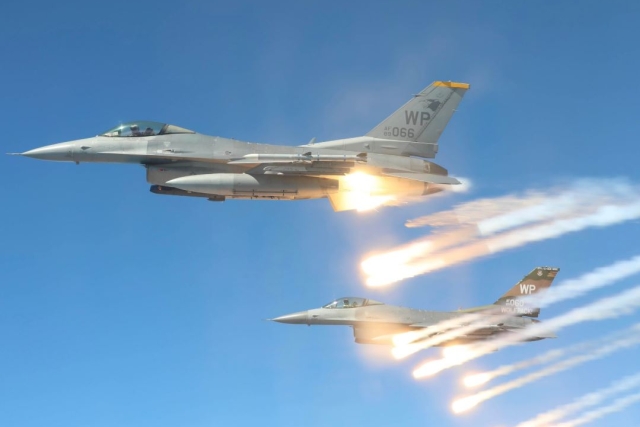
Alarmed at reports of Chinese hardsell of its J-10C fighter jets to potential Rafale customers, French intelligence said in a confidential report seen by the Associated Press that Chinese mission in several countries were engaged in spreading doubts over the performance of French jets (Rafale and Mirage-2000).
While direct involvement of Chinese diplomats remains unverified, Beijing has openly promoted the J-10CE and its other aircraft. Chinese Ministry of National Defense spokesperson Jiang Bin confirmed that several countries are in talks with China to procure the J-10C. “China is willing to share its equipment development achievements,” Jiang said, emphasizing a “responsible approach” to military exports.
J-35A vs F-35: Pricing, Capability, and Export Appeal
The J-35A is aimed at countries that find the F-35 unaffordable or face U.S. export restrictions. Washington has denied F-35 sales to partners like the U.A.E., Saudi Arabia, Egypt, Qatar, and Indonesia.
The F-35 Lightning II, developed by Lockheed Martin, comes in three variants—F-35A ($82.5 million), F-35B ($109 million), and F-35C ($102.1 million). It features sensor fusion, electronic warfare, and network-centric combat capabilities, with a top speed of Mach 1.6 and a 2,220 km operational range. It also carries up to 8,160 kg of payload.
The J-35A, reportedly priced at around $50 million, features stealth shaping, AESA radar, internal weapons bays, and a higher speed of Mach 2.0. However, it has a shorter range (1,200 km) and slightly lower payload capacity (7,000 kg). Its systems remain unproven in real-world combat. Reports from Pakistan suggest a deal for 30 units may have been negotiated, though this remains unconfirmed as the J-35A has not yet been delivered.
J-10CE vs F-16: Combat Claims and Market Competition
China’s single-engine J-10CE “Vigorous Dragon” is designed to rival the F-16 and Rafale. Equipped with a PL-15 long-range and PL-10 short-range missile, the J-10CE uses AESA radar, radar-absorbent material, and a canard-delta wing design. Priced at approximately $40 million with missile packages, it is cheaper than the F-16, which costs upwards of $60 million with similar configurations. Pricing details surfaced during Colombian President Gustavo Petro’s visit to Beijing in early 2025.
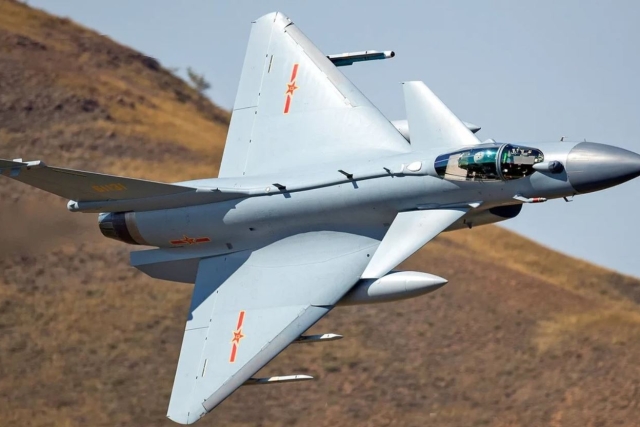
Pakistan’s claim of using the J-10C to down multiple Indian jets—including Rafales—in May 2025 marked the aircraft’s first reported combat use. India initially denied the losses but later acknowledged “combat losses” without specifying aircraft types. Analysts say the event gave China rare insight into how its systems compare to Western ones.
“The clash seems to support the general assessment that Chinese weapons are proving to have become a match for Western weapons,” said Siemon Wezeman of the Stockholm International Peace Research Institute.
Globally, over 990 F-35s have been delivered as of mid-2024. The F-16 remains widely used due to its low operating cost, high reliability, and strong U.S. support infrastructure.
China is expanding its defense footprint in Latin America under the Belt and Road Initiative (BRI). After Colombia joined the BRI, China reportedly offered Bogotá two dozen J-10CEs, despite Colombia announcing plans to buy Sweden’s Gripen-E. China’s pitch emphasizes independence from U.S. export restrictions, which affect the Gripen due to its American engines.
Previous Chinese bids in the region—including JF-17 offers to Argentina and J-10C proposals to Brazil—failed as the U.S. countered with F-16 offers. Still, China continues using arms sales to build influence. The outcome in Colombia will be a test case for Beijing’s efforts to shift Latin America’s arms market away from Western suppliers.
The Pakistan-India air clash became a showcase for Chinese technology, boosting investor confidence. Chengdu Aircraft Corporation’s stock, which builds the J-10C and J-35A, surged over 30% following the incident. Meanwhile, Dassault Aviation, which manufactures the Rafale, saw its shares drop more than 7% after the reports. If confirmed, the Rafale’s losses would be its first in combat.
The J-10C’s affordability—estimated between $40–50 million—makes it appealing to nations with tighter defense budgets. Its rising interest in countries like Egypt, Saudi Arabia, and Algeria reflects a growing trend where battlefield performance drives demand, similar to how past U.S. operations boosted sales of the F-15 and F-16.
